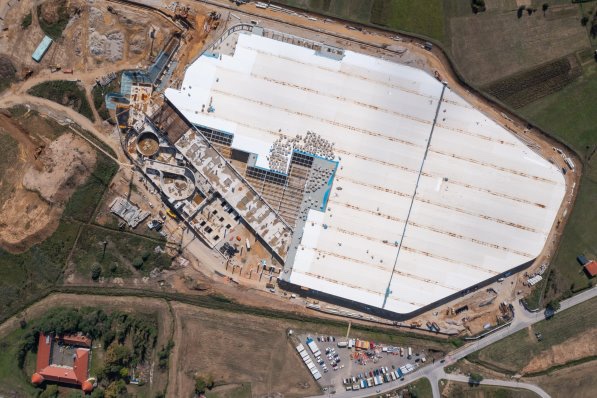Stage One of 200M EUR Rimac Campus to be Completed in 2023

After 14 months of construction, the new home of the Rimac Group, the Rimac Campus on the outskirts of Zagreb, is on track to hit its first major milestone in the first half of 2023. The 70,000m2 production hall is scheduled to be completed and producing Rimac Technology projects mid-next year.
The production hall will form the beating heart of the new Rimac Campus, which will also house 2,500 Rimac Group employees when it’s completed. The Campus will become not only a base for global production of Rimac components and vehicles but also the corporate HQ and R&D center.
Construction of the production facility has been prioritized over other areas of the 200,000m2 Campus because of the rapid growth of the Rimac Technology arm of the Rimac Group. Rimac Technology develops and produces advanced electrification components for the world’s largest OEMs and is already publicly working with Porsche, Hyundai, Automobili Pininfarina, Aston Martin, and many more. By the time the Campus is fully completed it will already be at capacity delivering Rimac Technology projects.
Mate Rimac, founder and CEO of the Rimac Group, said: “When the Campus project was given the green light we had 400 employees. Today we have more than triple that, and we know already that Campus will only be the start of our expansion plans. Upon completion of the entire project, our offices will be full and our production hall will be running at 100%. While we see the Campus as our long-term home, we’re already planning construction of a new ‘Mega Campus’ – built on land three times larger than the Campus – focused on growing the Rimac Technology production potential even further.”
When completed, the entire Rimac Campus will be sustainable, carbon neutral and geared around its inhabitants. The huge, flat roof of the production facility will be covered in solar panels to generate electricity and will be linked to the HQ and R&D building by a large glazed restaurant subtly built into the landscape, with sweeping views on either side. At one end of this building will be a kindergarten and retail space, at the other end a showroom and museum. Design and development facilities, including prototyping, will also be based here.
Naturally, in keeping with the brand’s focus on striking design, innovation and sustainability, the new complex will contain many clever and unique features. Among them are an urban ‘swamp’ and meadows, plus a rooftop garden, a command center, VR-rooms and several top-secret project rooms. A high-end customisation showroom, and bar will also feature at the new Campus.
Upon completion, the entire Campus will be encircled by an on-site test track, being developed specifically to feature a ‘drift corner’. Uniquely, the site will also be free from fences, completely open to the public to enjoy the space and mix with Rimac employees.






